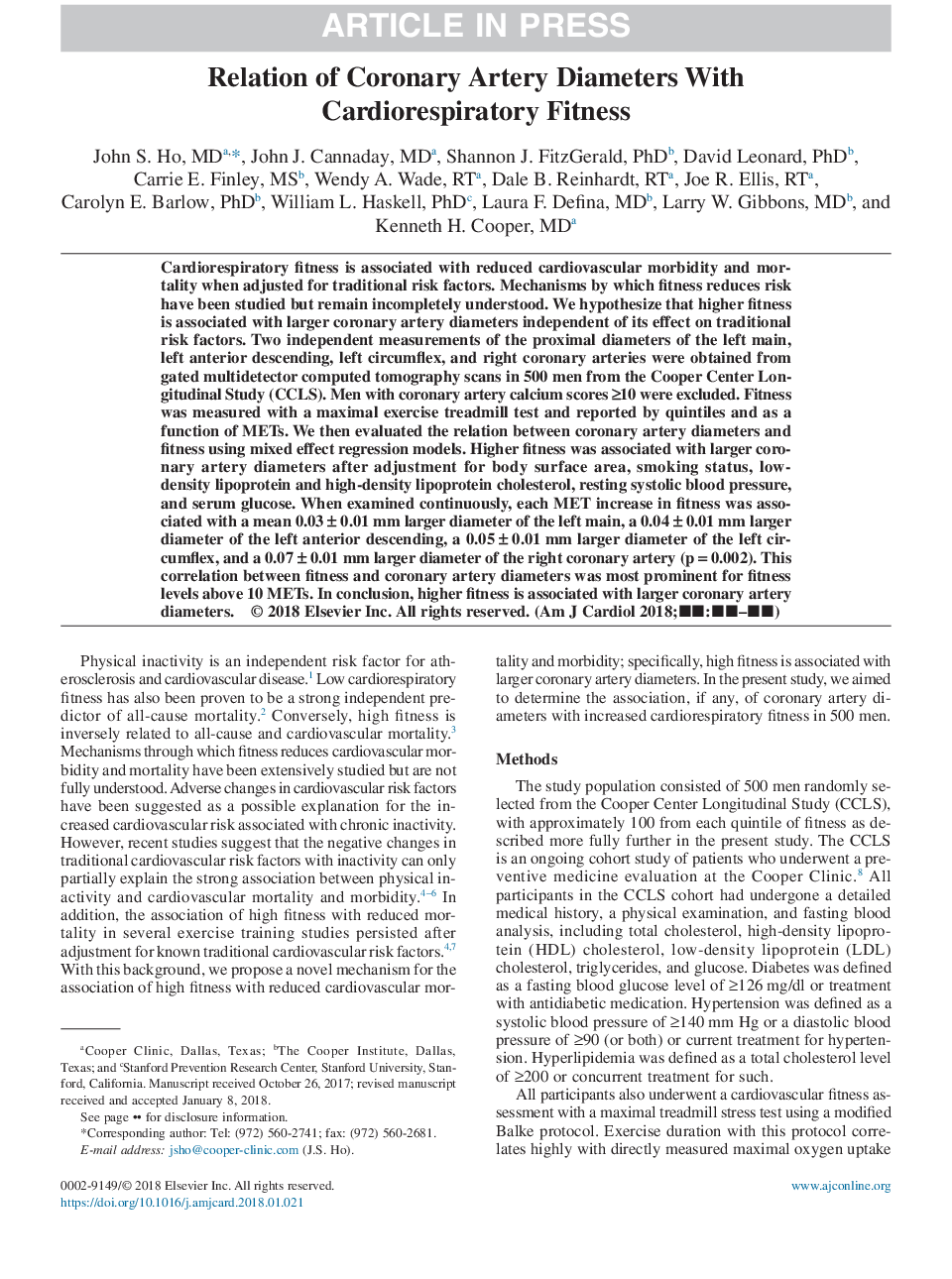| Article ID | Journal | Published Year | Pages | File Type |
|---|---|---|---|---|
| 8651307 | The American Journal of Cardiology | 2018 | 7 Pages |
Abstract
Cardiorespiratory fitness is associated with reduced cardiovascular morbidity and mortality when adjusted for traditional risk factors. Mechanisms by which fitness reduces risk have been studied but remain incompletely understood. We hypothesize that higher fitness is associated with larger coronary artery diameters independent of its effect on traditional risk factors. Two independent measurements of the proximal diameters of the left main, left anterior descending, left circumflex, and right coronary arteries were obtained from gated multidetector computed tomography scans in 500 men from the Cooper Center Longitudinal Study (CCLS). Men with coronary artery calcium scores â¥10 were excluded. Fitness was measured with a maximal exercise treadmill test and reported by quintiles and as a function of METs. We then evaluated the relation between coronary artery diameters and fitness using mixed effect regression models. Higher fitness was associated with larger coronary artery diameters after adjustment for body surface area, smoking status, low-density lipoprotein and high-density lipoprotein cholesterol, resting systolic blood pressure, and serum glucose. When examined continuously, each MET increase in fitness was associated with a mean 0.03â±â0.01âmm larger diameter of the left main, a 0.04â±â0.01âmm larger diameter of the left anterior descending, a 0.05â±â0.01âmm larger diameter of the left circumflex, and a 0.07â±â0.01âmm larger diameter of the right coronary artery (pâ=â0.002). This correlation between fitness and coronary artery diameters was most prominent for fitness levels above 10 METs. In conclusion, higher fitness is associated with larger coronary artery diameters.
Related Topics
Health Sciences
Medicine and Dentistry
Cardiology and Cardiovascular Medicine
Authors
John S. MD, John J. MD, Shannon J. PhD, David PhD, Carrie E. MS, Wendy A. RT, Dale B. RT, Joe R. RT, Carolyn E. PhD, William L. PhD, Laura F. MD, Larry W. MD, Kenneth H. MD,
